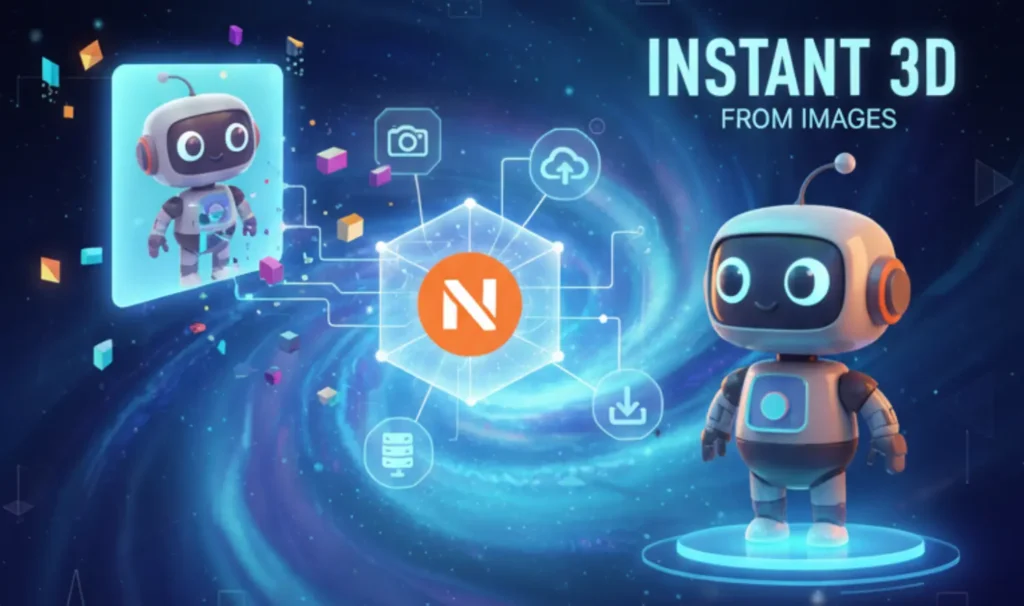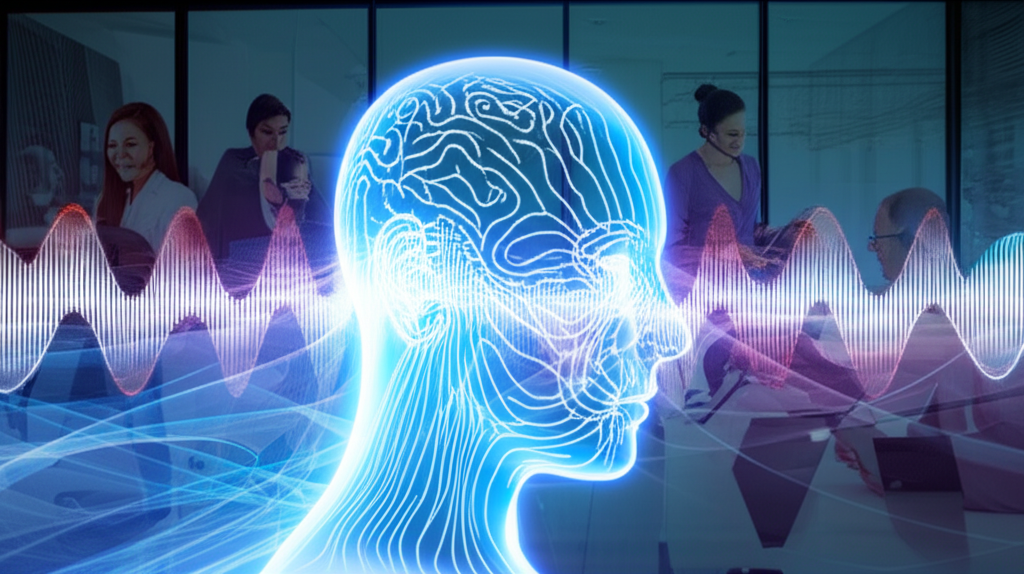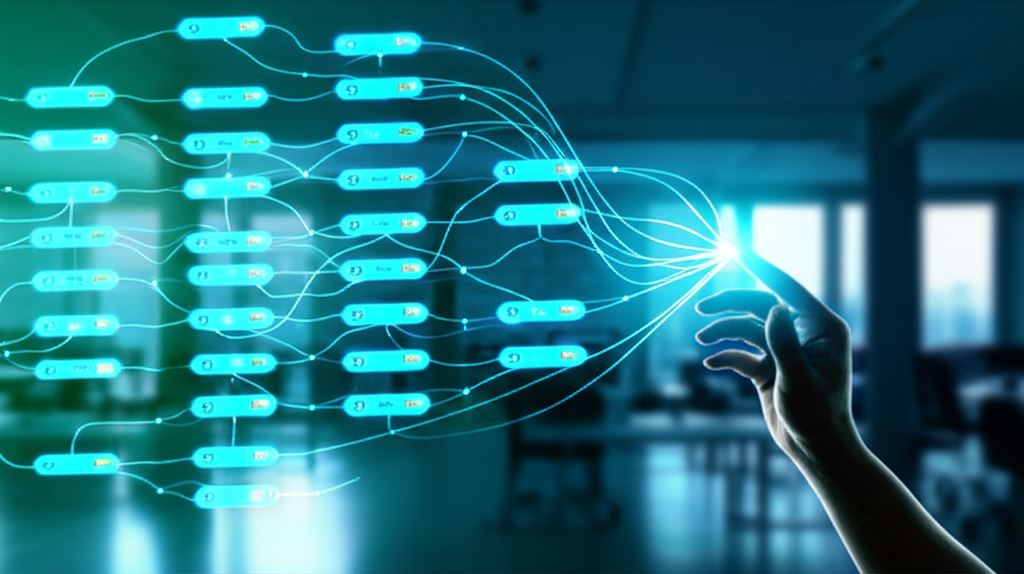Hey there, fellow designer! Ever found yourself staring at a blank canvas, dreaming of a quicker way to bring your 3D visions to life? You’re not alone. In today’s fast-paced creative world, the demand for high-quality 3D assets is skyrocketing, but the time it takes to model them from scratch can be a real bottleneck.
Imagine this: You take a few photos of an object, and almost magically, a detailed 3D model appears, ready for your projects. Sounds like something out of a sci-fi movie, right? Well, thanks to some clever technology and automation, this isn’t just a dream anymore. We’re talking about turning everyday images into stunning 3D models with surprising ease.
But is it pure magic, or is there a master workflow behind the scenes making it all happen? Today, we’re diving deep into how tools like N8n can empower designers like you to automate the creation of 3D models from images, transforming your creative process and saving you precious time. Let’s explore!
The Designer’s Dilemma: Time vs. Detail in 3D Model Creation
As designers, we constantly balance speed and quality. Crafting intricate 3D models traditionally demands significant time, expertise, and specialized software. Every curve, every texture, every polygon requires meticulous attention.
This often means choosing between rushing a project or sacrificing valuable hours that could be spent on other creative endeavors. For many, finding faster, smarter ways to generate quality 3D models isn’t just a luxury; it’s a necessity to stay competitive and unleash more creativity.
Unlocking the Power of Photogrammetry (and Beyond)
So, how do we actually go from 2D pictures to a fully realized 3D object? The core technology often at play here is called photogrammetry. Simply put, photogrammetry is the science of making measurements from photographs, which can then be used to reconstruct a 3D scene or object.
You take multiple overlapping photos of an object from different angles. Special software then analyzes these images, identifies common points, and calculates their positions in 3D space. The result? A highly accurate, textured 3D model that captures the real-world details of your subject. Beyond traditional photogrammetry, advancements in AI and machine learning are also paving the way for even more instantaneous generation of 3D models from images, sometimes needing only a single photo!
N8n: Your Workflow Automation Sidekick for 3D Models
This is where N8n steps in as your secret weapon. If you’re not familiar, N8n is a powerful, open-source workflow automation tool. Think of it as a digital bridge that connects different apps and services, allowing them to talk to each other and perform tasks automatically.
For designers, N8n automation for designers can be an absolute game-changer. Instead of manually uploading images, waiting for processing, downloading results, and then moving them to your design software, N8n can string all these actions together into a seamless, automated flow. It’s about building a ‘set it and forget it’ system for creating your desired 3D models.
Building Your “Magic” Workflow: A Designer’s Blueprint
Let’s map out a conceptual workflow to create 3D models from photos using N8n. While the exact nodes (N8n’s building blocks) and services might vary, the general idea remains the same:
Image Input: Your workflow could start by watching a specific folder on your cloud storage (like Google Drive or Dropbox) or an email attachment for new image sets. Once new images are detected, the magic begins.
Trigger Photogrammetry Service/API: N8n can then take these images and send them to a dedicated photogrammetry service or an AI-powered API. This could be a cloud-based service, a self-hosted tool like Meshroom, or even an advanced AI model that specializes in instant 3D model generation.
Process and Wait: The external service crunches the numbers, reconstructs the 3D model, and generates the necessary files (like OBJ, FBX, or GLB). N8n can be set to wait for this process to complete, perhaps checking the status periodically.
Output Management: Once the 3D model is ready, N8n springs back into action. It can download the generated 3D files, store them in a designated folder, perhaps convert them to a different format if needed, and even notify you via Slack or email that your new 3D model is ready for prime time.
Practical Scenarios: Where This Workflow Shines
This kind of automated photogrammetry workflow isn’t just a cool trick; it has practical applications for various design fields:
Product Visualization: Quickly create 3D models of physical products for e-commerce, marketing materials, or interactive presentations.
Game Asset Creation: Rapidly generate assets for game environments by scanning real-world objects.
Architectural & Interior Design: Scan existing spaces or objects to quickly integrate them into new designs or create ‘as-built’ models.
Digital Archiving: Preserve historical artifacts or delicate objects in a digital 3D format without physical handling.
Beyond the “Magic”: The Master Workflow Advantages
While the immediate result might feel like magic, the true power lies in the master workflow you’ve designed. Here’s why this approach is so advantageous:
Efficiency Boost: Automate repetitive tasks, freeing up your time to focus on refining designs, creativity, and client communication rather than manual file management.
Scalability: Need to process hundreds of image sets? No problem. N8n can handle batch processing, allowing you to scale your 3D model generation effortlessly.
Consistency: Automated workflows ensure that every set of images goes through the same precise steps, leading to more consistent output quality and fewer errors.
Cost-Effectiveness: By reducing manual labor and speeding up production, you save on operational costs and can take on more projects without increasing your team size.
Innovation: This streamlined photogrammetry workflow allows you to experiment more, iterate faster, and push the boundaries of what’s possible in your 3D design projects.
Getting Started: What You’ll Need
Ready to try creating your own instant 3D models? Here’s a quick checklist to get you started:
An N8n Instance: You can host N8n locally on your machine, deploy it on a cloud server, or use a managed N8n service.
Access to a Photogrammetry Tool or API: Research services like Meshroom (free, open-source), RealityCapture (commercial), Metashape (commercial), or newer AI-powered APIs (like Luma AI, Kiri Engine, or similar services that offer programmatic access).
Quality Images: Good input is key! Ensure you have well-lit, clear, and overlapping photos of the object you wish to model.
Basic API Understanding: While N8n simplifies things, a basic grasp of how APIs work will help you connect services effectively.
Conclusion: Master Your 3D Model Workflow
So, is generating instant 3D models from images with N8n magic? In a way, yes – it feels like it when you see the results! But underneath that magical feeling is a meticulously designed “master workflow” powered by smart automation. By harnessing tools like N8n, designers can dramatically cut down on the manual grind of creating 3D models, allowing more time for true creativity and innovation.
This isn’t just about efficiency; it’s about unlocking new possibilities for your design projects. Imagine what you could create with an always-on, automated assistant for 3D model generation. The future of design is here, and it’s automated!
Have you experimented with automating your 3D workflows? What tools do you use? Share your thoughts and experiences in the comments below!





